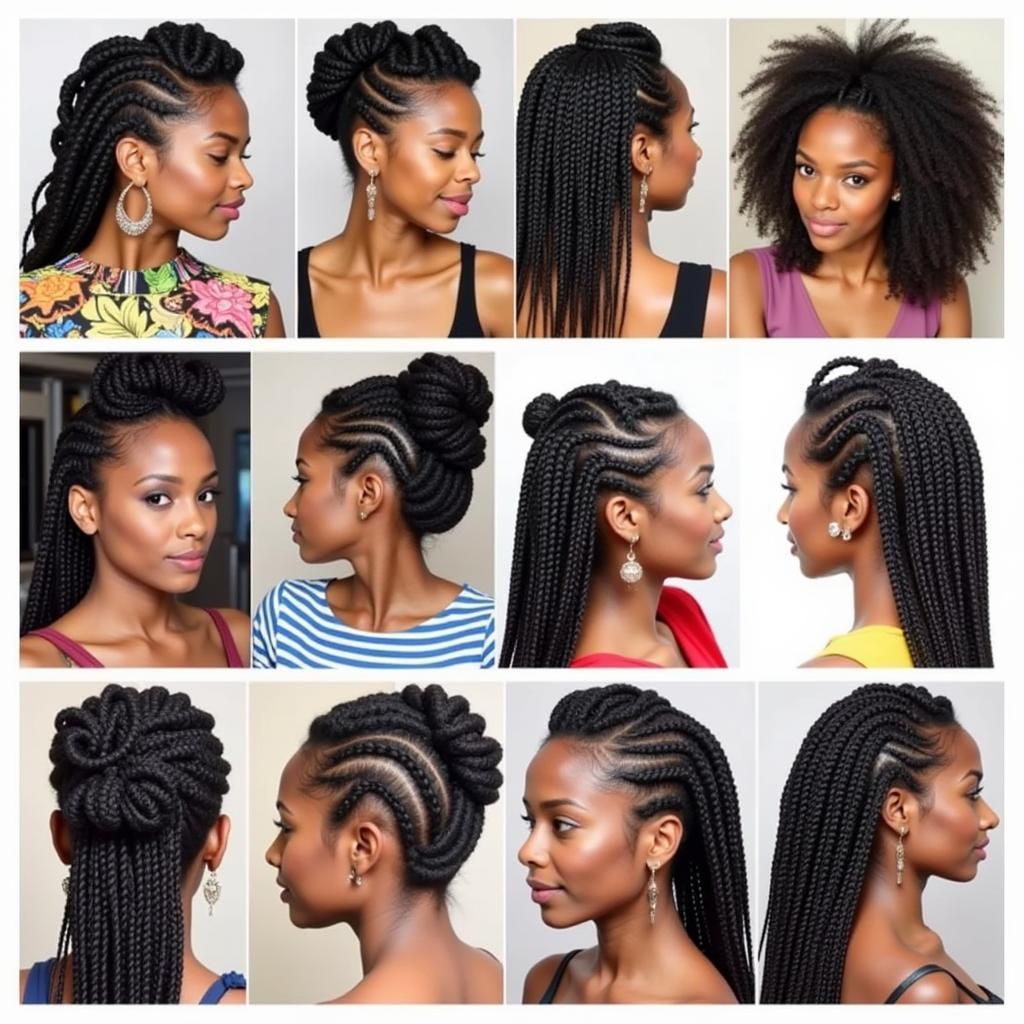African American Hair Wigs and Hairpieces: A Journey Through Style and Identity
African American Hair Wigs And Hairpieces are more than just fashion accessories; they represent a rich tapestry of cultural heritage, personal expression, and evolving beauty standards. From the ancient traditions of braiding and adornment to the modern embrace of versatile styles, wigs and hairpieces have played a significant role in the lives of African Americans for centuries.
The Historical Significance of African American Hair
For centuries, hair has held profound cultural and social significance within African communities. Intricate hairstyles served as markers of tribal affiliation, social status, and even marital status. Braiding techniques, passed down through generations, were not just about aesthetics but also about preserving traditions and strengthening communal bonds.
During the transatlantic slave trade, African hair was often shaved off as a way to strip individuals of their identity and cultural heritage. This act of oppression, however, also led to the emergence of new forms of expression through the use of headwraps and other coverings. These head coverings became symbols of resilience, creativity, and resistance.
The Evolution of Wigs and Hairpieces in African American Culture
The 20th century saw a surge in the popularity of wigs and hairpieces within the African American community. The Civil Rights Movement fostered a sense of pride in natural hair, but it also coincided with a desire for versatility and self-expression through different hairstyles. Wigs and hairpieces provided a way to navigate these evolving notions of beauty and identity.
From the glamorous afros of the 1970s to the sleek bobs and braids of the 1990s, wigs and hairpieces allowed African Americans to experiment with different looks without the commitment of permanently altering their natural hair. This freedom of choice empowered individuals to define their own personal style and challenge conventional beauty standards.
Types of African American Hair Wigs and Hairpieces
Today, the market for African American hair wigs and hairpieces is more diverse than ever, offering a wide range of options to suit every need and preference. Some of the most popular types include:
- African human hair wigs: African human hair wigs are prized for their natural look and feel, offering versatility in styling and a luxurious appeal.
- Synthetic wigs: Synthetic wigs provide a more affordable option, with advancements in technology making them increasingly realistic in appearance and feel.
- Lace front wigs: Lace front wigs create a seamless hairline, providing a natural look that blends seamlessly with the wearer’s skin tone.
- African American half wigs: Half wigs offer versatility by blending with the wearer’s natural hair, allowing for various styling options.
- Hair extensions: Hair extensions add length and volume to natural hair, providing a temporary way to achieve different looks.
Choosing the Right Wig or Hairpiece
Selecting the perfect wig or hairpiece is a personal journey. Factors to consider include lifestyle, budget, desired look, and face shape. Consulting with a hairstylist specializing in wigs can provide valuable guidance in finding the right fit and style.
Caring for Your Investment
Proper care and maintenance are essential for extending the lifespan of wigs and hairpieces. Using specialized shampoos and conditioners designed for wigs, as well as gentle detangling techniques, can help preserve their quality and appearance. Storing wigs on wig stands or in breathable containers helps maintain their shape and prevents tangling.
African American Hair Wigs and Hairpieces: A Celebration of Identity
In conclusion, African American hair wigs and hairpieces continue to be a powerful form of self-expression, cultural affirmation, and style evolution. From their historical roots to their modern-day versatility, they empower individuals to embrace their unique beauty, celebrate their heritage, and navigate the ever-changing landscape of style with confidence and grace.



